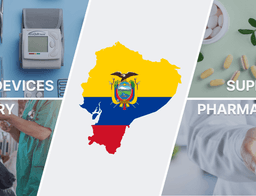Glaucoma, Public Health Problem in the Developing World – Is Your Business Ready?

Contents Overview
Being of Asian, African or Caribbean descent increases the risk of developing glaucoma, with close to half of the patients with glaucoma coming from Asia. Additionally, the highest prevalence of PACG (Primary Angle-Closure Glaucoma) form of the disease, causing more than half glaucoma-related blindness globally, can also be found within the Asian population. For the African and Caribbean populations, the disease is four to eight times more likely to occur, and even the youngest are significantly more affected – 75% of the world’s blind children live in the developing world. However, treatment and an effective approach to fighting the disease has materialized in the developed world. Education is, therefore, the first step forward followed closely in importance by the distribution of affordable medicine.
The number of people with glaucoma worldwide is expected to rise from 64 million to 76 million in 2020 and up to 111 million in 2040. With the population aging most rapidly in the developed world and a lack of resources for treatment or even diagnosis, the number is likely to affect the poorest nations the greatest. For glaucoma, medicine should always be the first line of treatment, making surgery a last resort only if the drugs are ineffective. Furthermore, surgery is less favorable and the less effective option for Africans, Asians, and Carribeans than for people of Caucasian descent due to more rapid scarring of the tissues. Ironically, surgery is currently the most common first-line of treatment for developing world populations.
The Emerging Barriers

Only one specialist for 200,000 to 500,000 inhabitants
There are also other barriers standing in the way to effectively decrease cases of glaucoma as successfully as trachoma was recently reduced (eye infection caused by the bacterium Chlamydia trachomatis). One is a bad understanding of the disease, its symptoms, diagnosis and treatment options from the major percent of doctors. Lack of training results in a high disparity between the number of potential patients and available doctors on both the Asian and African continents. Regular eye checkups are already a rarity for most of the population in the developed world, and even upon sparse visits, many patients cannot be examined properly.
The other barrier is the fact that medicines to fight glaucoma represent a heavy burden for most of the people in developing countries. Poorer areas are often rural, where access to medicine is either highly limited or non-existent. For glaucoma patients, this represents an additional expense since the cost of transportation to the pharmacy, in India for example, can be even higher than the costs of medicine itself. Even those with higher incomes in India struggling with glaucoma end up spending a high percentage of their monthly income on the expenses associated with maintaining a drug regimen to treat the disease. This results in many of the patients choosing surgery over medicine, even though it is not recommended as a first-line treatment.
Education and Diagnosis
In Need of Affordable Medicine
The solution to this problem lies in the hands of distributors of more affordable and cost-effective medicine for the treatment of glaucoma in the emerging markets, and a better approach to the training of medical personnel on the health sector side. But the efforts should not stop there. More resources are needed to develop better-suited surgeries for patients of African, Asian and Caribbean descent as well.
Most importantly, current (eye) disease prevention programs need to include glaucoma awareness to further educate communities about the specifics of the disease. Not only should they be keenly aware of the symptoms, but they must also understand the importance of the timely use of prescribed medicine, the fact that glaucoma blindness is not reversible, and the risk factor stemming from a family history of the disease. Equipped with all of this knowledge, people themselves will show more initiative to seek the proper treatment.
AdvaCare offers a wide range of affordable supplements with varied formulas which can help maintain eye health and avoid or lower the risks for the development of glaucoma. These supplements include Vision Support Supplements, Fish Oil, and Ginkgo Biloba.
For those already affected, AdvaCare offers cost-effective pharmaceuticals for treatment or easing of the symptoms, such as Timolol Maleate Eye Drops and Vitamin B1 Injection.
Learn more about glaucoma in the developing world from sources for the article – Bulletin of the World Health Organization titled “Glaucoma is the second leading cause of blindness globally”, as well as articles “Glaucoma in developing countries” by Ravi Thomas, “Glaucoma in the Developing World” by Daniel B. Moore and Justin West and “Challenges in the management of glaucoma in developing countries” by Nadeem Hafeez Butt, Muhammad Hammad Ayub, and Muhammad Hassaan Ali.
Don't want to miss the next AdvaCare article?

Recommended Content

Leveraging Pharma Expertise to Thrive in Supplement Distribution


Ecuador: Importing Medicines with an International Pharmaceutical Manufacturer


How Distributors Can Win With Multi-Format Supplement Portfolios Aligned to Global Trends
